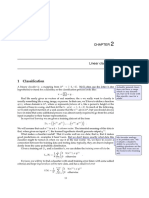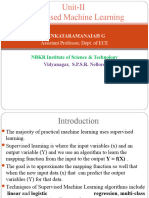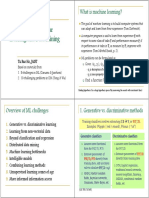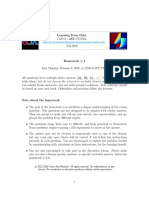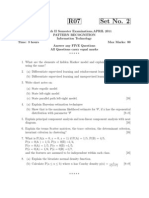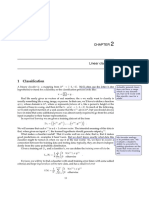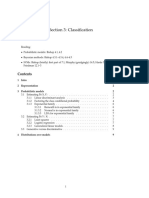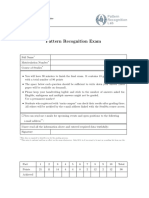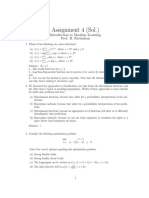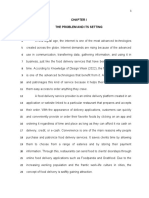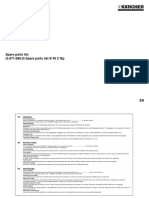0% found this document useful (0 votes)
46 views2 pagesCS481 Assignment3
This document contains an assignment for a pattern recognition course consisting of multiple choice questions, essay questions, and problem solving questions. The multiple choice questions test concepts in supervised learning, unsupervised learning, probability, and optimization methods. The essay questions ask students to discuss linear classifiers and optimization of linear classifiers. The problem solving questions provide data on two classes and ask students to derive discriminant functions and decision boundaries.
Uploaded by
Mohamed WaelCopyright
© © All Rights Reserved
We take content rights seriously. If you suspect this is your content, claim it here.
Available Formats
Download as PDF, TXT or read online on Scribd
0% found this document useful (0 votes)
46 views2 pagesCS481 Assignment3
This document contains an assignment for a pattern recognition course consisting of multiple choice questions, essay questions, and problem solving questions. The multiple choice questions test concepts in supervised learning, unsupervised learning, probability, and optimization methods. The essay questions ask students to discuss linear classifiers and optimization of linear classifiers. The problem solving questions provide data on two classes and ask students to derive discriminant functions and decision boundaries.
Uploaded by
Mohamed WaelCopyright
© © All Rights Reserved
We take content rights seriously. If you suspect this is your content, claim it here.
Available Formats
Download as PDF, TXT or read online on Scribd
/ 2










